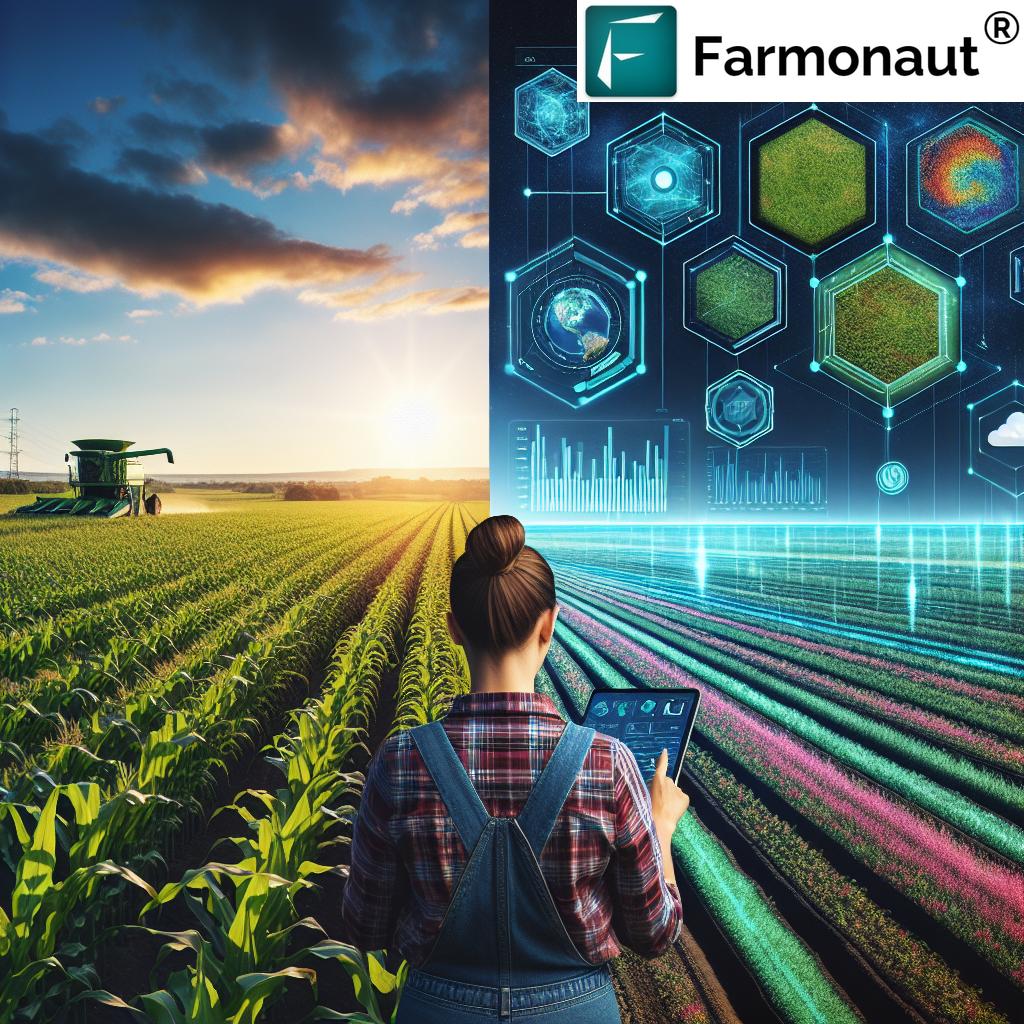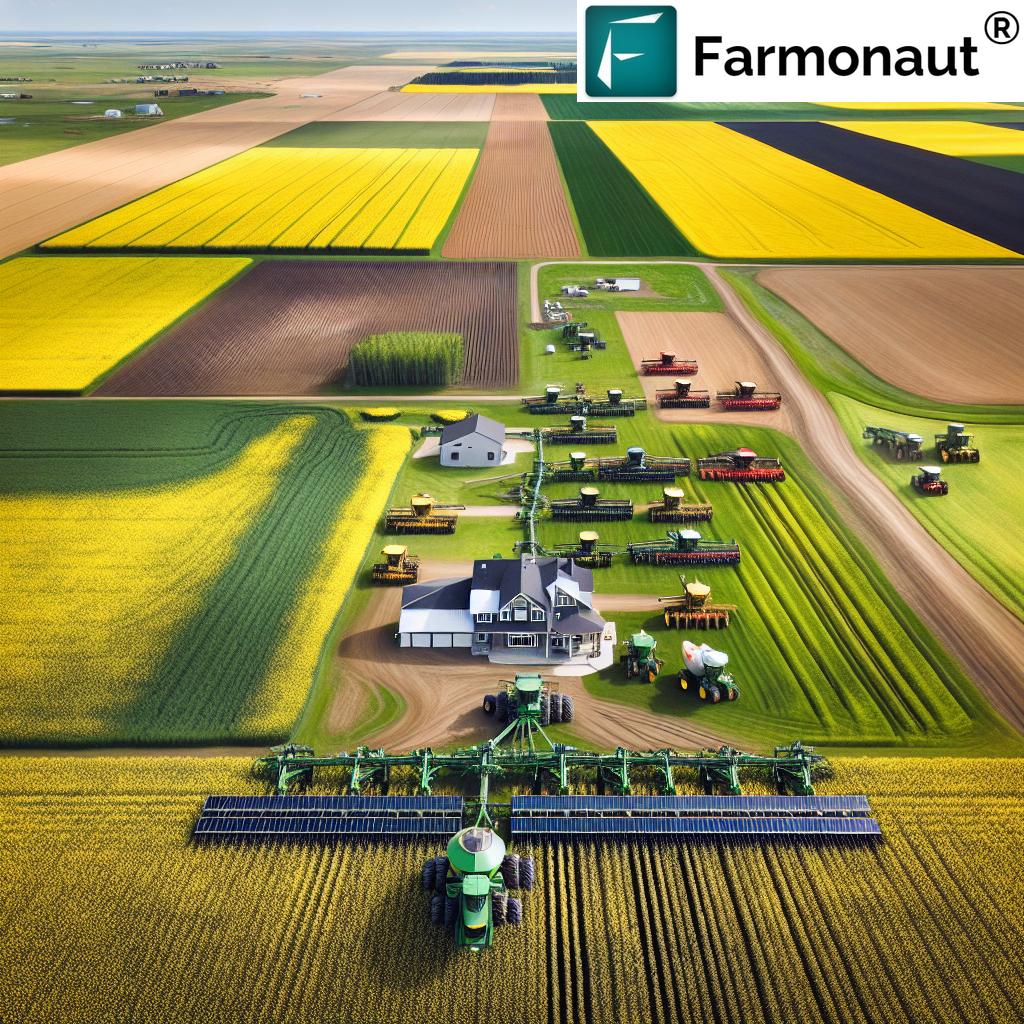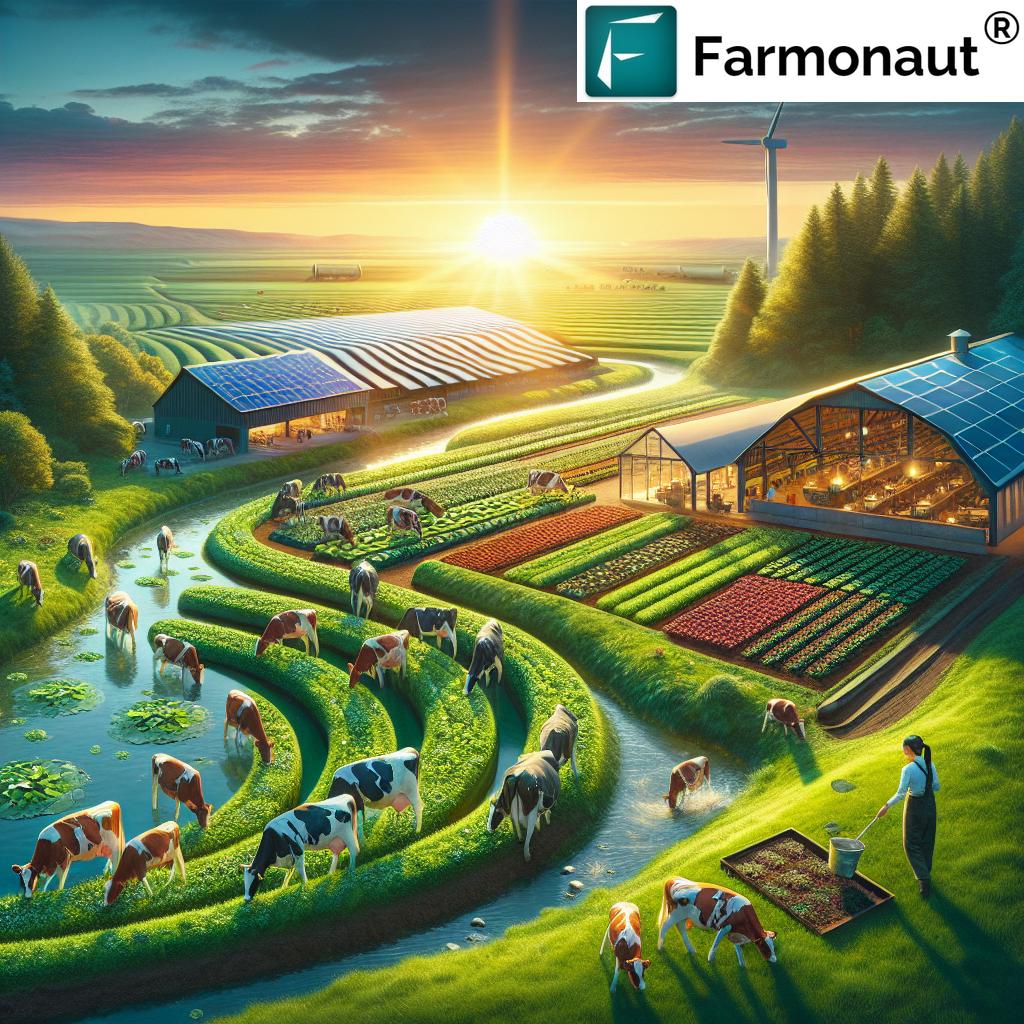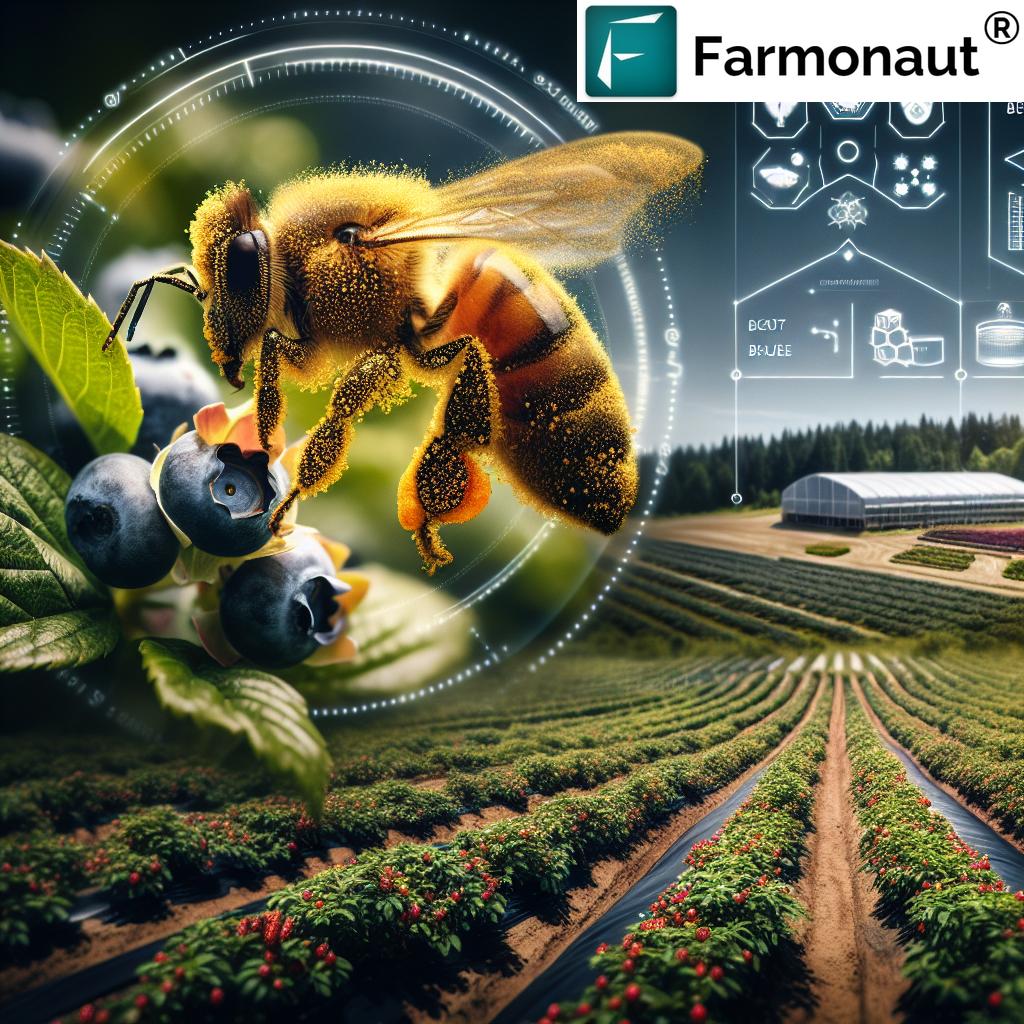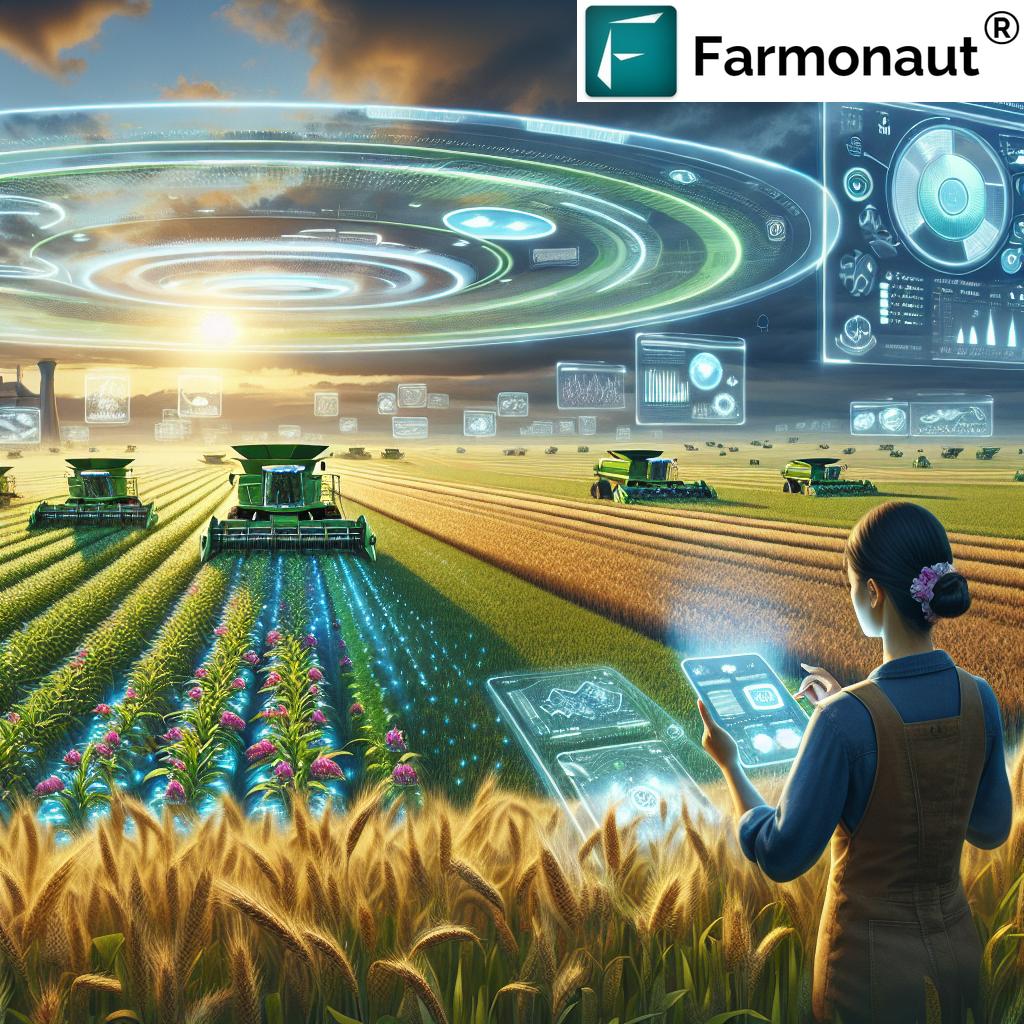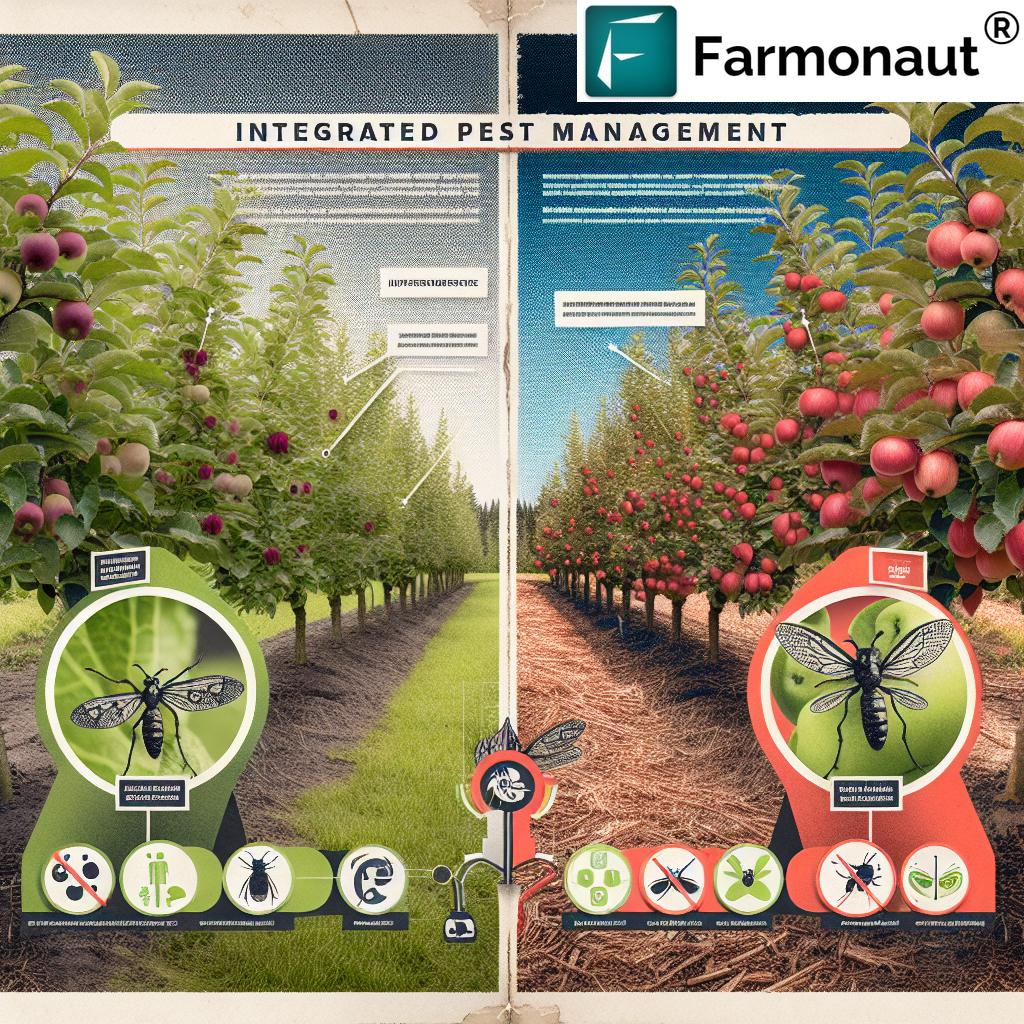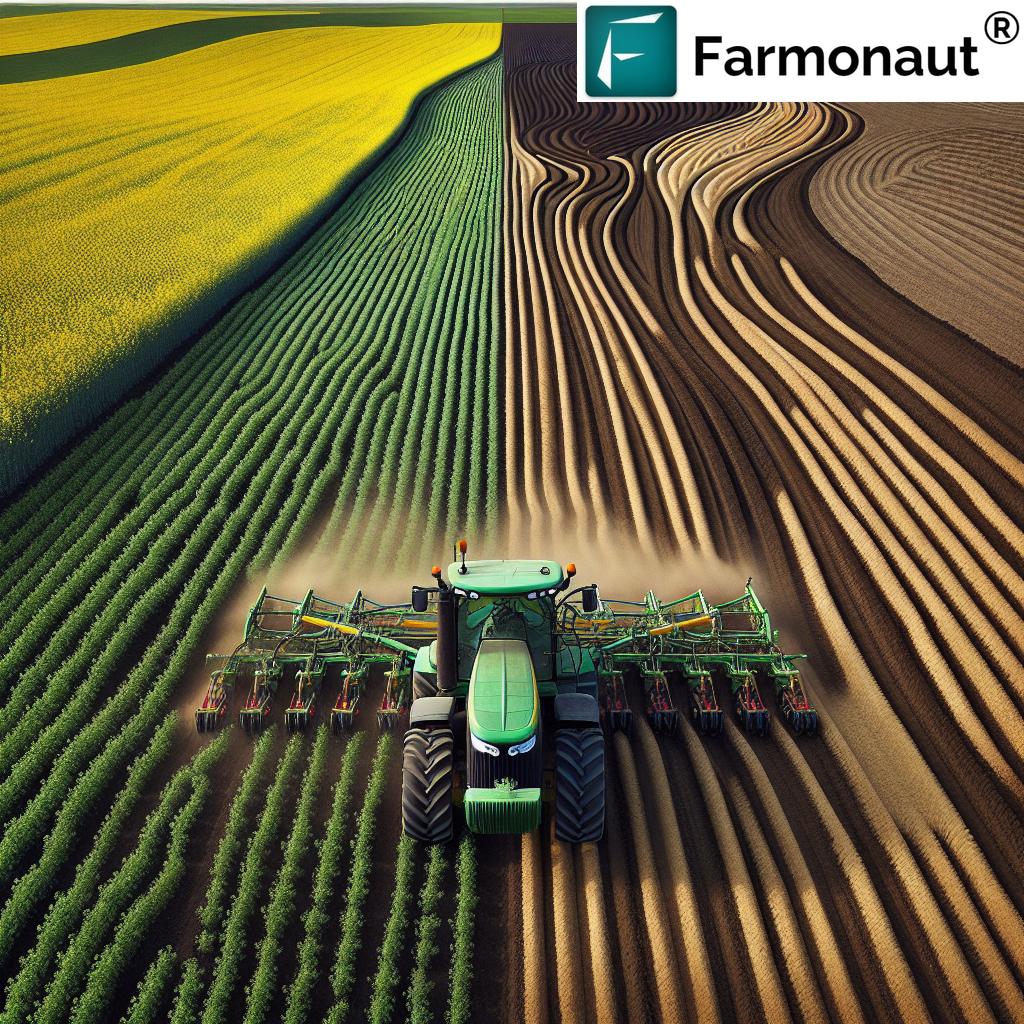2022 Crop Protection Insights: Navigating Challenges in Canadian Fruit and Vegetable Production
“In 2022, Canadian fruit and vegetable growers faced evolving pest threats due to climate change, impacting crop protection strategies.”
As we reflect on the agricultural landscape of 2022, it’s clear that Canadian fruit and vegetable growers faced a myriad of challenges in crop protection. The year brought significant developments in agricultural regulatory compliance, sustainable agriculture practices, and innovative pest management strategies. In this comprehensive analysis, we’ll explore the key observations and trends that shaped the industry, offering valuable insights for growers, policymakers, and agtech innovators alike.
The Evolving Landscape of Crop Protection
The fruit and vegetable production sector in Canada underwent substantial transformations in 2022, primarily driven by the need for more effective and sustainable crop protection technologies. As climate change continues to impact crops, growers across the country have been compelled to adapt their strategies to combat evolving pest threats and maintain produce quality.
At Farmonaut, we’ve observed these changes firsthand through our satellite-based crop health monitoring services. Our technology has enabled us to track the shifting patterns of pest infestations and crop health across various regions in Canada. This data has been instrumental in helping growers make informed decisions about their crop protection strategies.
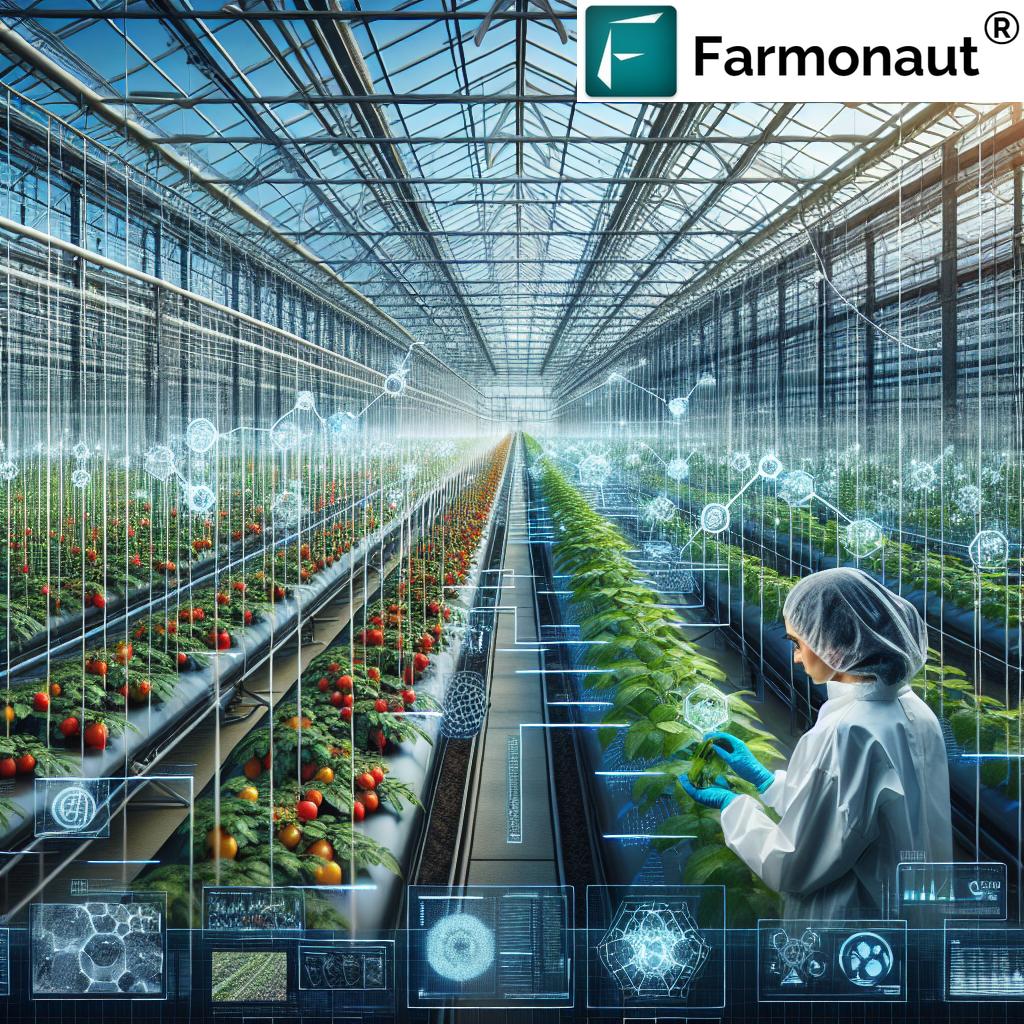
Key Challenges in Canadian Fruit and Vegetable Production
The year 2022 presented several significant challenges for Canadian growers:
- Climate Change Impact: Shifting weather patterns led to unpredictable growing seasons and new pest pressures.
- Regulatory Compliance: Stricter regulations on pesticide use necessitated the adoption of alternative pest control methods.
- Economic Pressures: Rising input costs and market volatility strained growers’ resources for crop protection.
- Labor Shortages: The ongoing challenge of finding skilled workers affected timely implementation of crop protection measures.
These challenges underscored the need for innovative solutions in pest management and crop protection. The integration of agtech for pest management became not just beneficial but essential for many growers.
Innovative Pest Management Strategies
In response to these challenges, we saw a significant uptick in the adoption of modern crop protection strategies. Some of the most promising innovations included:
- Precision Agriculture: The use of GPS-guided sprayers and drones for targeted pesticide application.
- Biological Control Agents: Increased use of natural predators and parasites to control pest populations.
- Smart Monitoring Systems: Implementation of IoT sensors and AI-driven pest detection technologies.
- Resistant Crop Varieties: Development and adoption of crop varieties with enhanced pest resistance.
At Farmonaut, our Jeevn AI Advisory System has been at the forefront of this technological revolution, providing real-time insights and personalized advice to growers on pest management strategies.
The Role of Agricultural Regulatory Compliance
2022 saw significant developments in agricultural policy and regulations, particularly concerning crop protection. The Pest Management Regulatory Agency (PMRA) in Canada continued to refine its approach to pesticide regulation, emphasizing the need for more sustainable and environmentally friendly pest control methods.
Key regulatory changes included:
- Stricter limits on neonicotinoid pesticides to protect pollinators
- Increased focus on integrated pest management (IPM) practices
- Enhanced reporting requirements for pesticide use
These regulatory shifts created both challenges and opportunities for growers. While adapting to new regulations required investment and changes in practices, it also spurred innovation in sustainable agriculture practices.
Sustainable Agriculture Practices in Crop Protection
“Regulatory compliance and sustainable practices were key focus areas for Canadian agriculture in 2022, balancing pest control with standards.”
The push towards sustainability in agriculture gained significant momentum in 2022. Growers increasingly adopted practices that not only complied with regulations but also improved long-term soil health and ecosystem balance. Some key sustainable practices included:
- Cover cropping to suppress weeds and improve soil fertility
- Crop rotation to disrupt pest life cycles
- Conservation tillage to preserve soil structure and beneficial organisms
- Precision irrigation to reduce water usage and minimize conditions favorable to pests
Our satellite-based crop health monitoring at Farmonaut has been instrumental in helping growers implement these sustainable practices more effectively. By providing detailed insights into crop health and soil conditions, we’ve enabled growers to make more precise decisions about resource allocation and pest management.
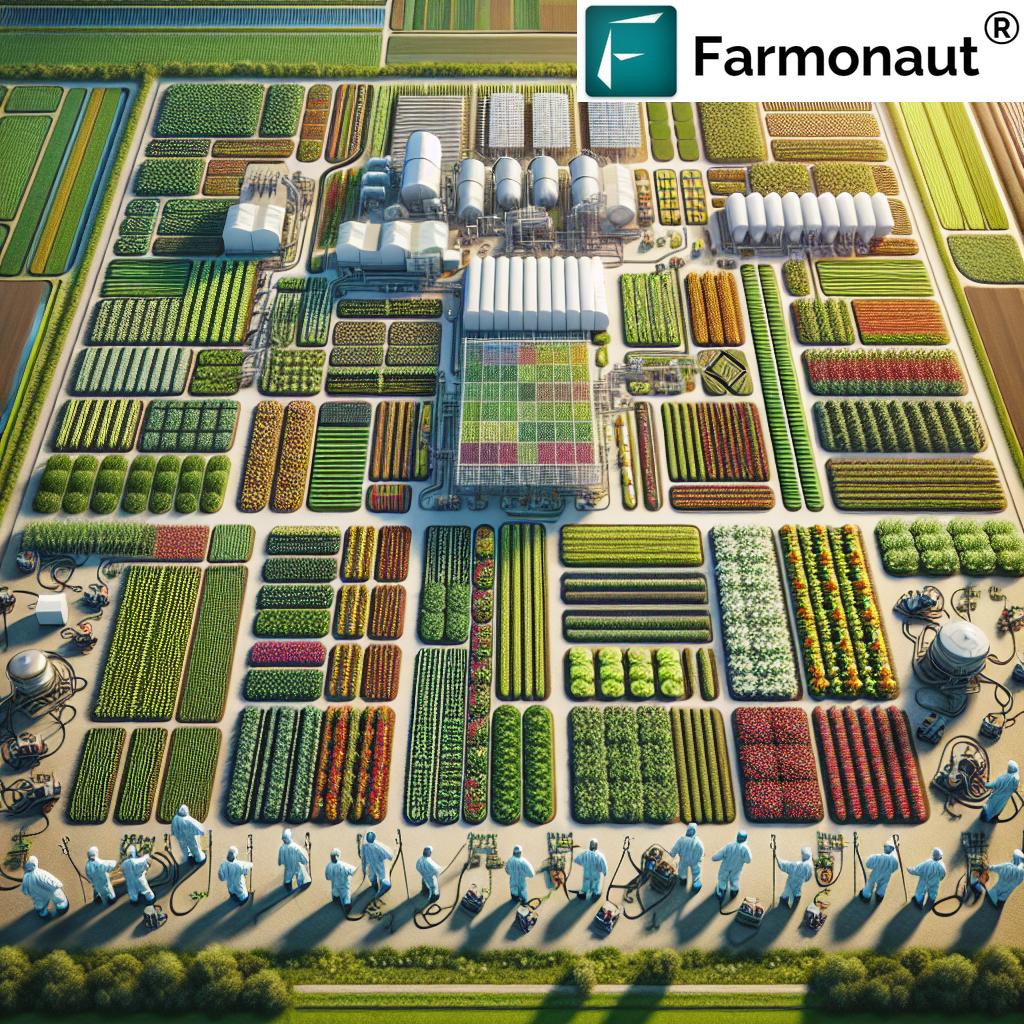
The Integration of Agtech in Pest Management
The year 2022 marked a significant leap in the integration of agricultural technology (agtech) for pest management. This trend was particularly evident in the fruit and vegetable sectors, where precision and timing are crucial for effective pest control.
Key agtech advancements included:
- Satellite Imaging: High-resolution satellite imagery for early detection of pest infestations and crop stress.
- AI and Machine Learning: Advanced algorithms for predicting pest outbreaks and optimizing treatment schedules.
- IoT Sensors: Network of sensors for real-time monitoring of field conditions conducive to pest development.
- Robotics: Autonomous vehicles for precise pesticide application and mechanical weed control.
At Farmonaut, we’ve been at the forefront of this technological revolution. Our satellite-based crop health monitoring system, coupled with the Jeevn AI Advisory System, has provided growers with unprecedented insights into their fields. This technology allows for early detection of pest issues and provides data-driven recommendations for targeted interventions.
Explore our API for integrating advanced satellite data into your agricultural systems.
Economic Implications of Modern Crop Protection Strategies
The adoption of innovative pest management and crop protection strategies had significant economic implications for Canadian fruit and vegetable growers in 2022. While the initial investment in new technologies and practices was substantial, many growers reported long-term benefits:
- Reduced pesticide costs through more targeted application
- Improved crop yields due to more effective pest control
- Enhanced produce quality, leading to better market prices
- Decreased labor costs through automation of certain pest management tasks
However, it’s important to note that the economic impact varied depending on factors such as farm size, crop type, and local market conditions. Smaller operations often faced challenges in adopting more expensive technologies, highlighting the need for scalable solutions and government support.
Collaboration Within the Industry
One of the most encouraging trends observed in 2022 was the increased collaboration among various stakeholders in the agricultural sector. This collaboration was crucial in addressing the complex challenges of crop protection in a changing environment.
Key collaborative efforts included:
- Partnerships between research institutions and growers for field testing of new pest control methods
- Knowledge sharing platforms where growers could exchange experiences and best practices
- Cooperation between technology providers and agricultural consultants to develop tailored solutions
- Industry-wide initiatives to address common challenges like pesticide resistance
These collaborative efforts have been instrumental in driving innovation and ensuring that new crop protection strategies are practical and effective in real-world conditions.
The Future of Crop Protection in Canadian Agriculture
As we look beyond 2022, several trends are likely to shape the future of crop protection in Canadian fruit and vegetable production:
- Increased Adoption of Precision Agriculture: More growers are expected to embrace data-driven farming practices, using technologies like those offered by Farmonaut for precise pest management.
- Emphasis on Biological Control: The use of natural predators and biopesticides is likely to increase as regulations on chemical pesticides tighten.
- Climate-Resilient Strategies: Crop protection methods that account for changing climate patterns will become increasingly important.
- Integration of AI and Machine Learning: Advanced predictive models will play a larger role in pest management decision-making.
- Focus on Soil Health: Strategies that promote overall soil health as a means of pest resistance will gain prominence.
Discover how our API Developer Docs can help you integrate cutting-edge agricultural insights into your systems.
Comparative Analysis: 2022 Crop Protection Challenges and Solutions
| Crop Type | Primary Pest Threat | Estimated Crop Loss (%) | Conventional Solution | Innovative Agtech Solution |
|---|---|---|---|---|
| Apples | Codling Moth | 15-20% | Chemical Insecticides | Pheromone Disruption + AI-driven Monitoring |
| Tomatoes | Late Blight | 30-35% | Fungicide Sprays | Satellite Imaging for Early Detection + Precision Spraying |
| Potatoes | Colorado Potato Beetle | 20-25% | Broad-spectrum Insecticides | Robotic Pest Removal + Resistant Varieties |
| Carrots | Carrot Rust Fly | 10-15% | Crop Rotation | IoT Sensors for Pest Prediction + Targeted Biocontrol |
| Grapes | Powdery Mildew | 25-30% | Sulfur-based Fungicides | UV-C Light Treatment + AI-driven Disease Forecasting |
This table illustrates the significant shift towards technology-driven solutions in crop protection. The innovative agtech solutions not only address the primary pest threats more effectively but also align with the growing demand for sustainable and environmentally friendly farming practices.
The Role of Government and Policy in Shaping Crop Protection Strategies
Government policies and regulations played a crucial role in shaping crop protection strategies in 2022. The Canadian government, through agencies like Agriculture and Agri-Food Canada, implemented several initiatives aimed at promoting sustainable agriculture and effective pest management:
- Funding for research into alternative pest control methods
- Programs to support the adoption of precision agriculture technologies
- Initiatives to promote integrated pest management practices
- Revisions to pesticide registration processes to expedite approval of low-risk products
These policies have had a significant impact on the industry, encouraging innovation while ensuring that crop protection methods meet stringent safety and environmental standards.
The Impact of International Trade on Crop Protection Practices
International trade considerations significantly influenced crop protection practices in Canadian fruit and vegetable production in 2022. Key factors included:
- Export Market Requirements: Meeting pesticide residue limits set by importing countries.
- Global Supply Chain Disruptions: Affecting the availability of certain crop protection products.
- International Pest Pressures: Increased vigilance against invasive species due to global trade.
- Harmonization of Standards: Efforts to align Canadian crop protection practices with international norms.
These international factors underscored the need for flexible and adaptive crop protection strategies that could meet both domestic and international requirements.
The Role of Education and Training in Advancing Crop Protection
Education and training emerged as critical components in the advancement of crop protection strategies in 2022. With the rapid evolution of technologies and practices, continuous learning became essential for growers, consultants, and industry professionals. Key educational initiatives included:
- Workshops on integrated pest management techniques
- Training programs for the use of new agtech tools and platforms
- Online courses on sustainable agriculture practices
- Field demonstrations of innovative crop protection methods
These educational efforts played a crucial role in bridging the knowledge gap and accelerating the adoption of new crop protection technologies and practices.
Explore our mobile apps for on-the-go access to critical agricultural insights:
Conclusion: A New Era in Canadian Fruit and Vegetable Production
The year 2022 marked a pivotal moment in the evolution of crop protection strategies for Canadian fruit and vegetable growers. The challenges posed by climate change, regulatory pressures, and economic factors drove significant innovations in pest management and sustainable agriculture practices. The integration of advanced technologies, from satellite imaging to AI-driven advisory systems, has opened new possibilities for more effective and environmentally friendly crop protection.
As we move forward, the success of the Canadian agricultural sector will depend on continued collaboration between growers, researchers, technology providers, and policymakers. The lessons learned and innovations developed in 2022 have set the stage for a more resilient, sustainable, and productive future in fruit and vegetable production.
At Farmonaut, we remain committed to supporting this transformation by providing cutting-edge satellite-based farm management solutions. Our platform continues to evolve, offering growers the tools they need to navigate the complex landscape of modern agriculture and crop protection.
Start optimizing your crop protection strategies today with Farmonaut’s advanced solutions:
FAQs
- Q: How did climate change impact crop protection strategies in Canada in 2022?
A: Climate change led to unpredictable weather patterns and new pest pressures, requiring growers to adopt more flexible and adaptive crop protection strategies. - Q: What were the key regulatory changes affecting crop protection in 2022?
A: Key changes included stricter limits on neonicotinoid pesticides, increased focus on integrated pest management, and enhanced reporting requirements for pesticide use. - Q: How did precision agriculture contribute to crop protection in 2022?
A: Precision agriculture technologies, such as GPS-guided sprayers and satellite imaging, enabled more targeted and efficient application of pest control measures, reducing overall pesticide use. - Q: What role did AI and machine learning play in crop protection strategies?
A: AI and machine learning were used for predicting pest outbreaks, optimizing treatment schedules, and providing data-driven recommendations for pest management. - Q: How did sustainable agriculture practices impact pest management in 2022?
A: Sustainable practices like cover cropping, crop rotation, and conservation tillage helped improve overall soil health and natural pest resistance, reducing reliance on chemical pesticides.





